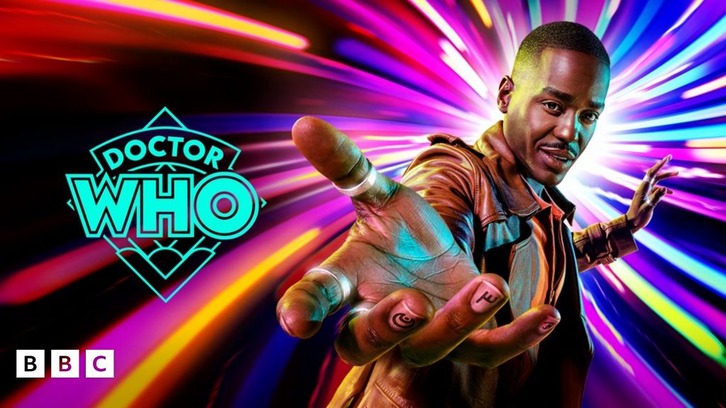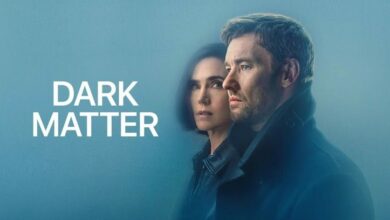
We’re four episodes into Season One now, and Doctor Who has hit a tipping point for many people where because of the reduced episode count we’re now halfway through. For context, at this point in Flux, we had War of the Sontarans and Village of the Angels, two incredible episodes – a bright spot among an underwhelming era. And now we have our two incredible episodes; Boom and 73 Yards, with the foreway into the supernatural cemented from the moment that Ruby and The Doctor walk out of the TARDIS and The Doctor breaks a curse that will haunt Ruby for the rest of her life, playing into themes of loneliness, abandonment and isolation.
It’s a shocking, harrowing start. She’s left alone by The Doctor when he vanishes into thin air, and chases a woman through the desolate, beautiful territory of Wales. Of course it’s Wales, because where else would Doctor Who be filmed? Ruby’s been there twice before, to break a boy’s heart and to see Shygirl – when if she was paying attention to last year’s Wide Awake lineup, she could’ve stayed in London to see her there. But now she’s on her own, this time’s different, and she wonders into a local pub that feels straight out of the British folk horror films of the 70s, Russell T. Davies experimenting with the genre once again – we’ve had space opera, musical, war, now supernatural, why not? Doctor Who can be anything and I love the breath of fresh air that we’re taking now.
It’s a Ruby-heavy episode and Millie Gibson steps up and delivers – a phenomenal solo performance carrying an episode so big. Her character ages through hell here as the unknown woman who’s haunting her is able to speak to everyone she’s ever loved, and with a word, turn them against her so that she never sees them again – even powerful enough to stop UNIT, and it’s such an emotional performance by the time that you witness Ruby break down and cry as her mother cuts her out of her life you can’t help but feel sorry for her. Abandonment is not easy; especially for someone who has so much on her shoulders. A life of loneliness and sorrow really creeps in, the chilling horror of that dominates the landscape. We see her pushed into a box; the scene where Kate Stewart reassures Ruby that she’ll be protected even though they have no answer to where The Doctor has gone is such a moment of genuine relief it makes what follows all the scarier when she turns away from her – her last hope gone. UNIT have been such a beacon of hope and to see the Kate Stewart saves the day moment turned on its head makes me glad that this bit of casting has been carried on over from the Moffat and Chibnall eras, as always, Jemma Redgrave is fantastic. But this is Gibson’s story, and she carries it headfirst on her shoulders. I liked the nods to the Sarah Jane Adventures episode – The Curse of Clyde Langer, and also, the bold lack of a title sequence makes 73 Yards the first time to do this since Sleep No More.
From the start there’s something not quite right about what’s going on and the episode feels very Midnight-y in concept, Davies doesn’t stop to explain what’s going on and when the ending loops back on itself, it kind of works. It almost works. It’s a bit of a let-down for me personally and I think it could have been a bit more concrete, but that element of the unknown, ethereal – it’s so much Twin Peaks there’s no way it wasn’t such an influence on the episode in particular. It’s Davies doing Turn Left again, it’s him doing Years and Years again, the turn into generational-universe ending politics is noticed when The Doctor spoils a genocidal politician who pushes the world to the brink of nuclear war and beyond rising through the Albion party in Wales; and this thread is picked up as we go along – a Trumpian political figure Roger Ap Gwilliam coming out of Wales rather than London is a rare change, only in a show that’s based in and filmed in Wales would do something like this, and it’s nice to have a story that’s so Wales-centric for what feels like ages since the Torchwood heyday.
Harriet Jones – Harold Saxon – Jo Patterson, Doctor Who doesn’t have the best record with British prime ministers, does it? One day we’ll get a good one. Roger Ap Gwilliam feels like the most the series gets to Years and Years, a direct copycat of Emma Thompsons Viviene Rook, and Aneurin Barnard was so good here at commanding the paranoid stage presence that the role required. As heartbreaking as it was to see her turn on Ruby it was also a tremendous tour-de-force for Michelle Greenidge, her take saying it was only “Welsh people” who were scared of the mysterious woman was a hoot, and it’s a relief that this change isn’t permanent, because of course it isn’t – thank god for that, the touches of abandonment and loneliness are handled so well here it’s a Ruby episode that really works wonders – seeing Sian Phillips back on screen is just exceptional.
It’s just a shame the ending doesn’t quite hit the mark – we’re five minutes away from an all-time classic episode. But 73 Yards is the next best thing and proof that Davies has still very much got it, even if the era as a whole hasn’t quite lacked the punch yet – we’re halfway through an eight episode season and it still hasn’t really felt like we’ve gotten proper Doctor Who adventures yet, but then this supernatural era of Doctor Who is something different, something new, and that’s how the show evolves. It’s a Miles O’Brian moment, or a Rory The Centurian moment, or Martha in the two year Toclafane world – probably the most comparable given the reset at the end, although Martha remembers, and just being alone for sixty years is a writing decision that I won’t forget anytime soon.
VERDICT: 9/10
Source link









